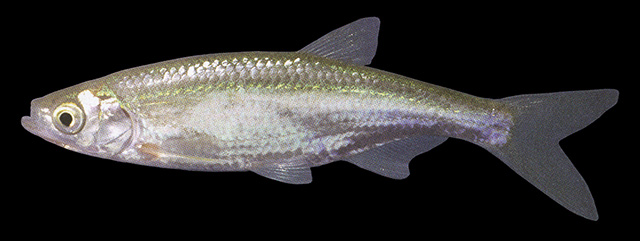| Leuciscidae (Minnows), subfamily: Leuciscinae |
| 15 cm SL (male/unsexed); max. reported age: 3 years |
|
benthopelagic; freshwater; brackish |
| Europe and Asia: Western and southern Caspian basin, from Kuma to Artek drainages. |
|
Vertebrae: 37-41. Diagnosed from congeners in Caspian and Black Sea basins by the following characters: origin of anal fin below branched dorsal rays 4-5; lateral line with 38-43 + 3 scales; anal fin with 11-16½ branched rays; 16-25 gill rakers; ventral keel exposed or partly or completely scales; body deep, depth 25-32% SL, markedly laterally compressed; caudal peduncle depth 1.7-2.1 times in its length (Ref. 59043). |
| Inhabits water bodies with slow to fast current, preferring places with slow current. Abundant in middle and lower parts of large rivers and their tributaries, reservoirs and swampy creeks; also in brackish water at river mouths, in estuaries and coastal lakes. Frequently schools in upper water layers. Feeds on plankton, insect larvae, and seeds. Spawns in shallow water at depth of 0.1-0.5 m. Lays sticky eggs, 1.4 mm in diameter, on submerged plants, rarely on pebbles (Ref. 59043). |
|
Least Concern (LC); Date assessed: 01 January 2008 Ref. (130435)
|
| harmless |
Source and more info: www.fishbase.org. For personal, classroom, and other internal use only. Not for publication.

